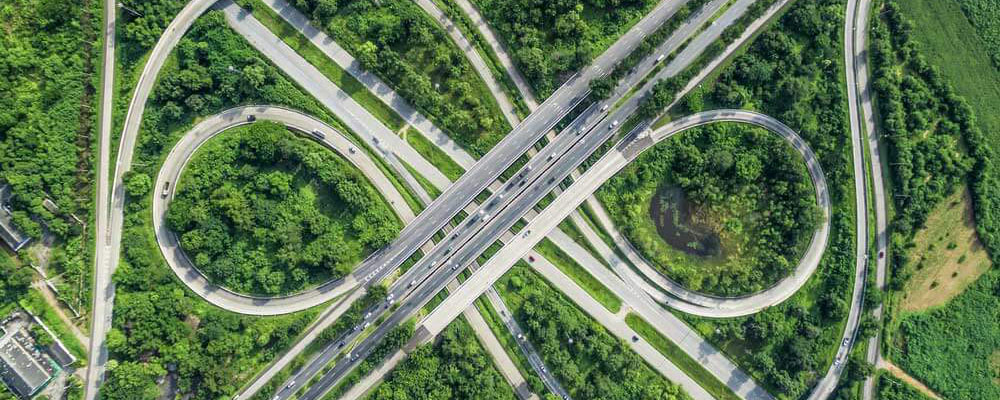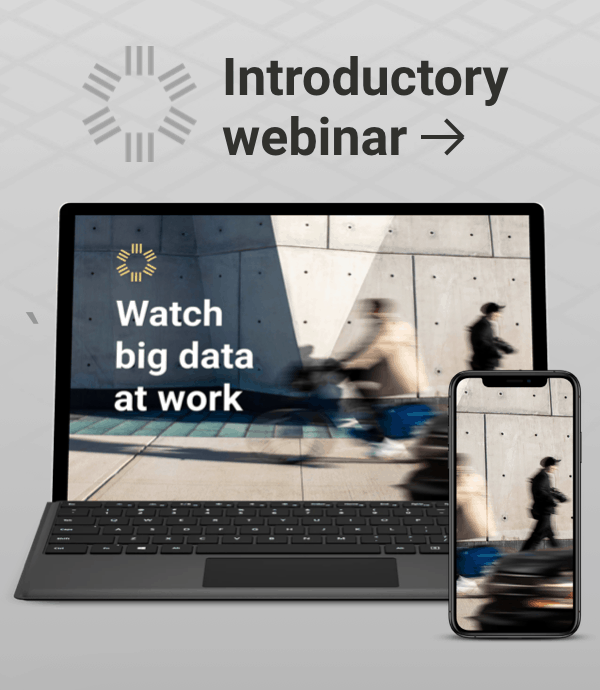
3 Steps for Transportation Planners to Use Big Data Effectively

Traditional methods of collecting information travel data feel familiar and intuitive to most transportation professionals. That makes sense because household surveys and simple sensors like tube counts have been around for decades. In contrast, Big Data can seem vague and conceptual. (Note: we define “Big Data” as the location records created by mobile devices.) The size and complexity of raw geospatial data sets make it nearly impossible for most transportation professionals to collect and process Big Data on their own.
But as vague and conceptual as Big Data may appear at first, it is actually just as straight-forward as traditional tools if you approach it in the right way. In this blog post, I’ll walk through three key steps that planners can take to use Big Data effectively.
While our traditional data collection tools are familiar and intuitive, they’re also time-consuming and expensive. Conventional tools were designed to collect data about yesterday’s transportation systems and behaviors – not the fast-changing travel patterns we see today. That means planners today face a far more complex transportation reality than their predecessors did, and their jobs are more challenging than ever. Fortunately, one of the most important benefits of Big Data is that you can spend less time collecting data and more time optimizing transportation plans.
If you follow the three steps outlined in this blog post, you will find there are just two major ways that Big Data differs from most traditional resources:
1. They are measure current travel behavior accurately, precisely and comprehensively.
2. They take a lot less time and effort to collect.
That means that once you have the information you need, actually using Big Data for transportation is similar to using traditional data sources. With the right process in place, getting started with Big Data is a breeze. Here are the three key steps for planners to take:
Step One: Build a Game plan for Using the Data
Step Two: Select the Right Data Resources
Step Three: Use the Right Processing Technology


Step 1: Build A Game Plan for Using the Data
To start off, you need a plan for how you’re going to use the data. Big Data is not automatically useful. What’s the point of having a lot of data that you don’t know what do with? The fact that data is “big” does not automatically make it valuable.
Your first step should always be to decide what you need to use the information for once you obtain it. In other words, planners should formulate the question that they want Big Data to answer. Here are a few smart game plans for using Big Data:
- To answer straightforward questions, such as, “What percentage of traffic on this off-ramp is ‘internal’ to my city?”
- To approach broad, but actionable questions, such as, “Which roads in this district have the most traffic that share origins and destinations?”
- For comparing transportation behavior in a lot of places. For example, for prioritizing various road segments to re-engineer for congestion mitigation out of thousands of possibilities.
Clearly articulating how the data will be used turns Big Data from a “vague concept” into a tool that you can actually benefit from.
Step 2: Select The Right Data Resources
Once you’ve decided exactly what you need Big Data to tell you, you can move into selecting the right type of location data to use. Those raw location records need to come from somewhere. For transportation planning, the two types of geospatial data we at StreetLight Data recommend are location-based services data and navigation-GPS data. These two types of data must be blended and combined with contextual data sets to describe travel behavior accurately.
Location-Based Services Data (LBS)
This data comes from smartphone apps that track devices’ locations in order to provide specific services. For example, apps that check the weather, certain gaming apps, dating apps, etc. LBS applications typically work in the background, even if users are not currently using the app. Once this location data has been collected and de-identified, it can help transportation planners understand activities and travel patterns around and between locations. It’s best for answering questions like:
- Where do people who visit this location generally live?
- Where do people who live in this location generally work?
- How far do people travel to visit this attraction?
Navigation-GPS Data
This type of data goes far beyond the devices that drivers stick to their windshields. Navigation-GPS data comes from a variety of tools that help people navigate, such as connected cars and trucks, turn-by-turn route guidance apps, and commercial fleet management systems. This type of data help transportation planners understand vehicle trips and routes with extremely high spatial precision. It’s best for answering questions like:
- What are the most popular routes between two locations?
- When is traffic at this intersection the worst?
- What are the origins and destinations of drivers on this off-ramp?
Contextual Data
Contextual data sets provide more details about the road network, the region, and the people using the transportation system. They help planners translate a raw location record into a story of travel behavior. For example, census data and parcel data can reveal demographics and trip purpose insights for specific mobility patterns. By blending this type of data with location records, you can:
- Determine the popular routes
- Understand the income and racial breakdown of people in traffic jam
- Infer trip purpose
Step 3: Choose the Right Processing Technology
Even if you could collect all the data yourself, it is not very helpful to have it in a huge messy pile; you need some way to get to the most useful information to aid your transportation planning. Essentially, you need a processing solution that reads all the data and pulls the most important information out of for you. StreetLight Data’s solution consists of two main components: A data-processing engine and a cloud-based platform for designing and accessing analytics.
Data Processing Engine
Our data processing engine, Route Science®, algorithmically transforms trillions of messy location data points into Metrics that describe travel patterns. The processing engine uses machine learning to clean and link location records into trips and activities, organize them temporally, and blend in contextual data.
Next, the data is normalized and aggregated into analytics that we call Metrics. These steps protect individual privacy, and ensure that our Metrics are comparable across different time periods. Finally, these Metrics are stored in a database and that you can query to answer transportation planning questions.
Cloud-Based Platform
Transportation planners can use our cloud-based platform (StreetLight InSight®) to ask and answer specific questions about travel patterns. In other words, it’s the tool that you can use to query the database we build using Route Science. When you use StreetLight InSight, it pulls the relevant data from that database and organizes the location records into Metrics. You can tweak your parameters to optimize your results and use visualization and analysis tools to access clear, compelling, data insights.
The Metrics you receive are just like the data you would gather from a traditional transportation study. In other words, they answer your specific travel behavior questions. StreetLight InSight Metrics include:
- Origin-Destination Matrices
- Select Link Studies
- Trip Purpose
- AADT
- Home and Work Locations
- And more!
Because these Metrics are designed for transportation, you can plug them into the forecasting tools and models that you already use for planning. The key difference is that the data you’re using reflects current travel behavior accurately, precisely and comprehensively.
Putting Your Plan into Action
It may not seem easy to get the Big Data insights you need for transportation planning at first glance. But the reality is that it’s simpler than ever. All you need is to consider the question you need to answer, choose the type of Big Data that can answer it, and utilize a robust processing engine. The result is Metrics that you can use in the same way as data derived from traditional resources.